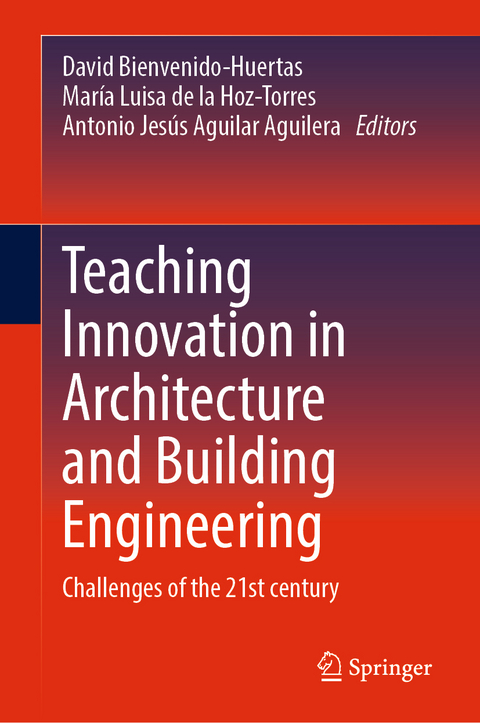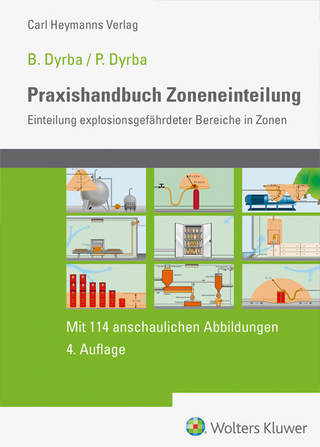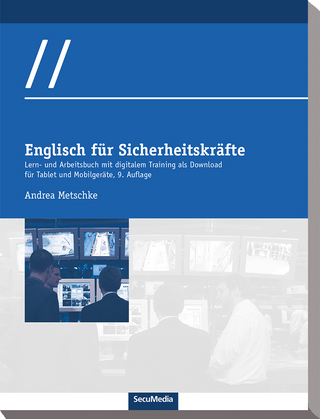
Teaching Innovation in Architecture and Building Engineering
Springer International Publishing (Verlag)
978-3-031-59643-8 (ISBN)
This book presents contributions on teaching innovation in university architecture and building engineering studies. The authors explain how the construction sector demands that future architects and building engineers have the knowledge and skills that allow them to meet the decarbonization objectives established by international organizations and that this causes the level of knowledge to be higher. The contributors further discuss new technologies and the internationalization of studies presenting new challenges university studies must face. This heterogeneity is represented in the chapters that make up this book developed by researchers from different countries. The book is divided into three blocks: (i) Active learning methodologies; (ii) Innovative methodologies applied to learning process; and (iii) Traditional vs. Advanced Techniques. The chapters of the book represent an advance in the current knowledge of teaching innovation techniques in university architecture and building engineering studies.
Dr. David Bienvenido-Huertas is Assistant Professor in the Department of Building Construction at the University of Granada. He is Visiting Professor at the University of La Coruña. His area of expertise covers climate change in the building sector, adaptive thermal comfort, heat transfer, fuel poverty, energy conservation measures, and design of nearly zero-energy buildings. He has also studied gamification, flipped classroom and internationalization at the university. He is author of more than 80 research papers, and he is recognized reviewer of various international indexed journals. He is the editor of 2 Springer books and the author of 2 SpringerBrief monographs.
Dr. María Luisa de la Hoz-Torres is a postdoctoral researcher at the University of Seville in the Department of Building Construction II. She works on the topic of physical environmental agents in the built environment. Her research focuses on the indoor environmental quality of buildings and how it affects their occupants. She has developed her research in different universities, including the University of Granada and the University of Minho, collaborating with other researchers and experts at an international level. She also studies different active teaching techniques for the acquisition of essential skills and knowledge in the architecture, engineering, and construction sector.
Dr. Antonio J. Aguilar is a postdoctoral researcher at the University of Granada in the Department of Building Construction, School of Building Engineering. His research area is related to the analysis and evaluation of indoor environmental quality factors in buildings, and the development of tools based on the Building Information Modelling (BIM) methodology for the design and management of buildings. He has taught courses of building physics, indoor environmental quality, and occupational health and safety to undergraduate and postgraduate students. He is interested in the development and research of new teaching methodologies and active learning techniques.
Part 1 Active learning methodologies.- Chapter 1 Gamification as a strategy for teaching construction project management systems.- Chapter 2 Gamified Architectural Design: Advancing Education with Extended Reality and AI Insights.- Chapter 3 Challenge based learning and flipped classroom: the way to train as a future prescribers of building materials to students.- Chapter 4 Initiation to Construction through student self-recording and the use of mobile applications to ensure active learning.- Chapter 5 FLIP-QTC: Enhancing quality testing and control knowledge on building materials through the Flipped Classroom methodology.- Chapter 6 Behavior pattern of building engineering students with flipped classroom: visualization and clustering evaluation analysis.- Chapter 7 Knowledge pills in Bachelor's Degree in Architecture: the Case of structural design.- Chapter 8 Successful application of active and collaborative learning methods in Geotechnics on Algarve University Civil Engineering course.- Chapter 9 A problem-based learning for the study of materials for construction.- Chapter 10 Team Based Learning as a tool for active learning of English in a STEM writing course.- Chapter 11 Introduction of b-learning and active methodologies aimed at enhancing the learning of Structural Analysis at higher education.- Chapter 12 Effectiveness of collaborative learning in engineering degrees. Improvement of professional skills.- Chapter 13 Knowledge Management Strategies and Their Impact on Advancing Biomaterials Innovation: Unique Competencies in Ibero-American Universities.- Chapter 14 Service-learning: improving both city and training of our building degree students.- Part 2 Innovative methodologies applied to learning process.- Chapter 15 Geospatial Insights: Harnessing GIS for Innovation in Architectural and Building Engineering Education.- Chapter 16 Adapting Agile Scrum Methodology for the Subject of Building Project Design in University Teaching.- Chapter 17 An environmental tool for End-of Degree Projects.- Chapter 18 Geotechnics, Heritage and Sustainability. A digitised and transversal knowledge of the underground in architecture higher education.- Chapter 19 Advancing transversal competencies in Engineering and Architecture: Integrating GIS and related tasks in multidisciplinary education.- Chapter 20 Methodological reflections on the teaching of digital tools in the field of the survey and representation of architectural heritage.- Chapter 21 Use of new technologies in university education in the field of building.- Chapter 22 Use of computer applications for data collection in technical inspections of buildings.- Chapter 23 Geographic Information Systems and Web GIS in higher education: a collaborative tool for the analysis of accessibility in the urban and built environment.- Chapter 24 Incorporating virtual simulations based on Building Information Modelling methodology as a teaching-learning tool.- Chapter 25 Building the future: Empowering young minds in the digital era through experiential architectural education.- Chapter 26 The application of flexible teaching as a response to 21st-century needs: experiences in Building Materials subjects.- Chapter 27 Maximizing Learning Potential: Embracing the Power of Digital Twins in Architectural and Construction Education of the 21st Century.- Part 3 Traditional vs. Advanced Techniques.- Chapter 28 New experimental teaching proposal to evaluate foreign students in technical subjects.- Chapter 29 Cognitive performance in virtual and physical classrooms: Are they comparable?.- Chapter 30 Innovative framework based on open-source programs in engineering education to modeled buildings' heat gains.- Chapter 31 Sustainable development applied to presentation environments for final degree projects.- Chapter 32 Tools and optimization of computer techniques applied to structural concrete.- Chapter 33 Data management model for software implementation applied to innovation and learning of construction management.- Chapter 34 Detection capacity by professors of academic architecture projects carried out with artificial intelligence.- Chapter 35 Limitations in the academic writing process of postgraduate students between 2010-2020. What tools do we have?.- Chapter 36 Academic Writing Tools for Postgraduate Students in architecture and building engineering.
| Erscheinungsdatum | 22.06.2024 |
|---|---|
| Zusatzinfo | XI, 655 p. 253 illus., 230 illus. in color. |
| Verlagsort | Cham |
| Sprache | englisch |
| Maße | 155 x 235 mm |
| Themenwelt | Technik |
| Schlagworte | Active learning methodologies • Architecture • Building Engineering • ChatGPT • E-Learning • Extended Reality • Flipped Classroom • Gamification • open access • Team based learning • Virtual Reality |
| ISBN-10 | 3-031-59643-9 / 3031596439 |
| ISBN-13 | 978-3-031-59643-8 / 9783031596438 |
| Zustand | Neuware |
| Informationen gemäß Produktsicherheitsverordnung (GPSR) | |
| Haben Sie eine Frage zum Produkt? |
aus dem Bereich


